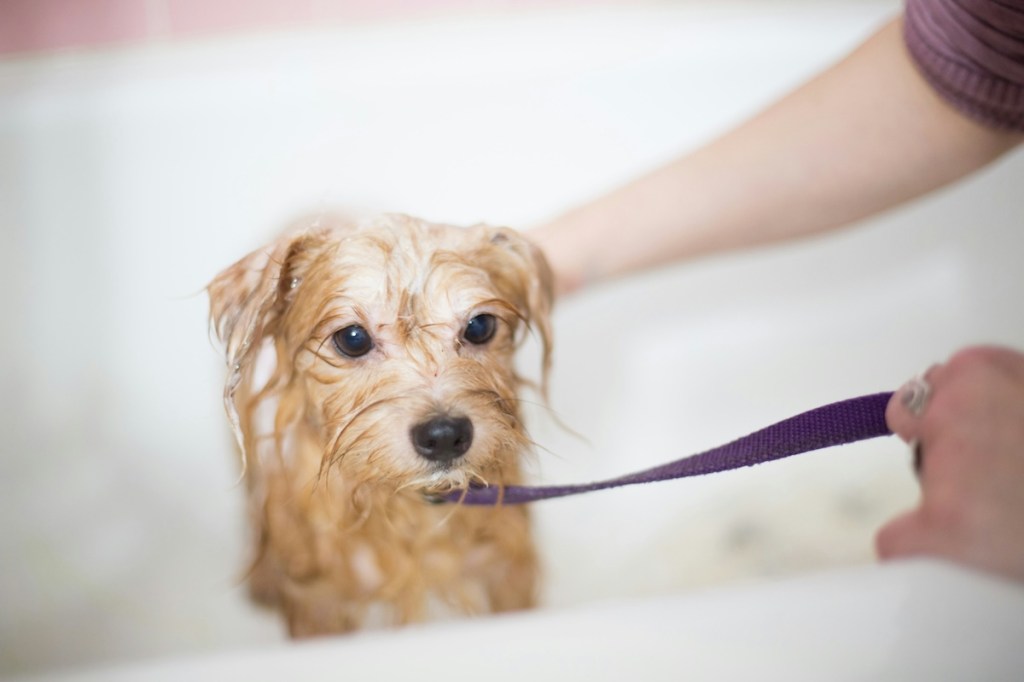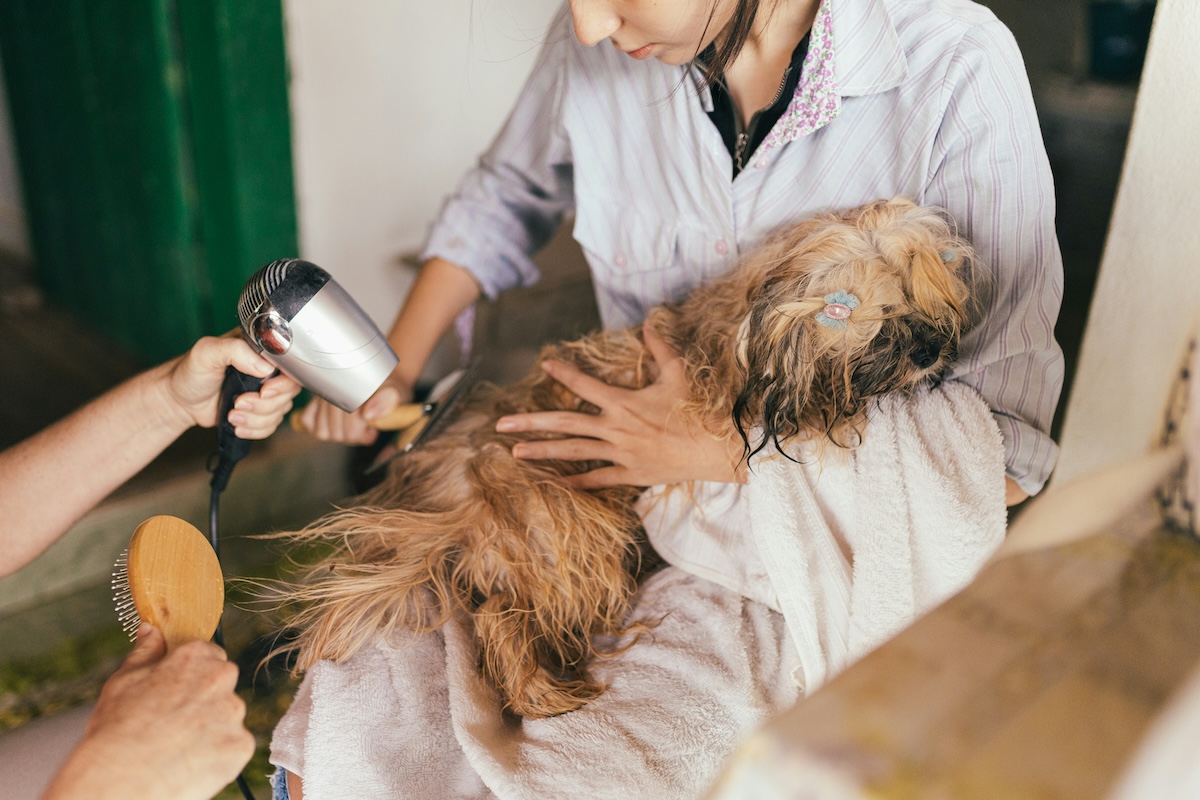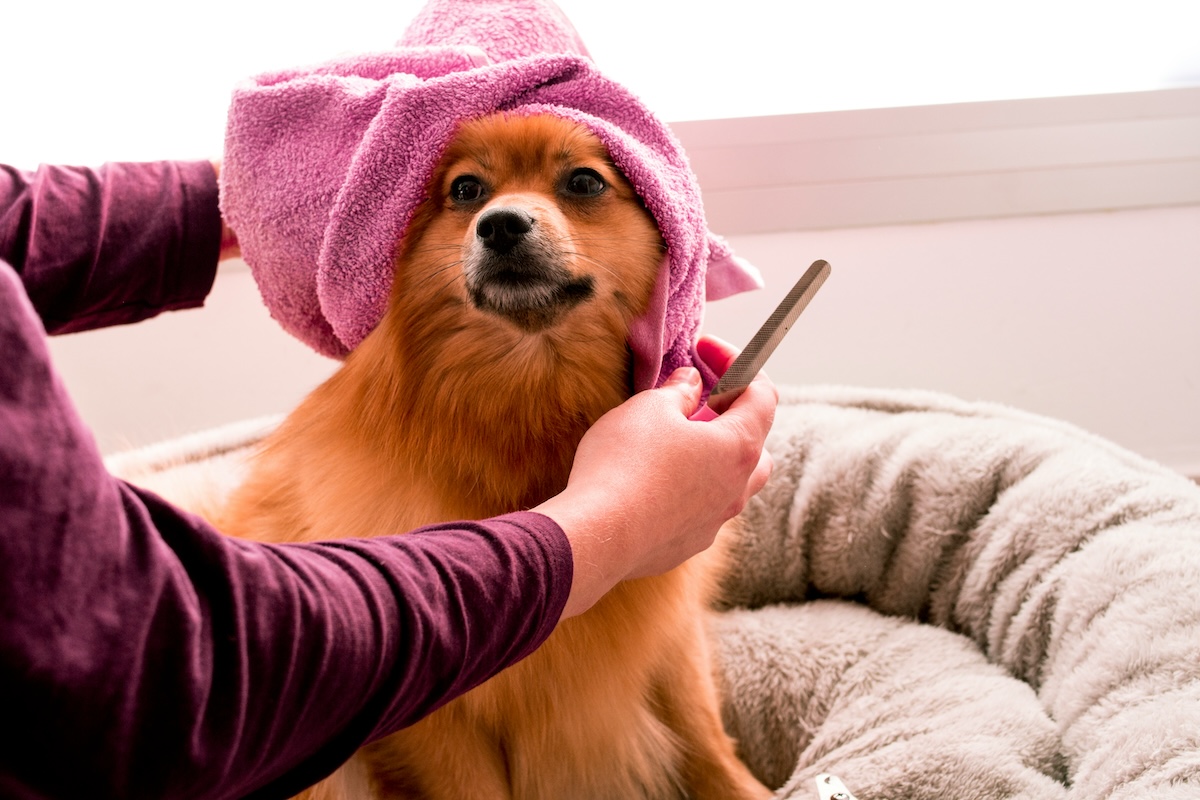
That new puppy smell is the absolute best until your furry friend rolls around in mud (at least you think it was mud … but it doesn’t smell like mud). The writing is on the wall at this point: Fido is due for a bath.
However, should you do like Mila Kunis and Ashton Kutcher reportedly do with their human children and wait until you see the dirt on your fur baby before throwing them in the bath? Conversely, if you consider your nightly bath or morning shower a blissful experience, should you extend the same to your pet?
While you may love your pet just as much (or more — no shame) as the humans in your life, dogs and people don’t share the exact hygiene needs. How often should you bathe your dog? There’s not a cut-and-dry answer. Here’s the dirt on dogs and bath frequency.
How often should you bathe your dog?

Generally, dogs benefit from a bath every one to three months, a significant range. Various factors will determine how frequently your dog needs a scrub in the tub, including activity level and coat length. Determining the answer is essential, as baths keep coats and skin healthy, dogs clean of debris and dirt, and your space smelling fresh. Also, some dogs find baths stressful, and you want to avoid unnecessary anxiety by intentionally and logically scheduling suds sessions.
These considerations will help you devise the best bath regimen for your pet.
- Coat length. Short-haired dogs generally require less bathing than their long-haired peers.
- Coat type. Length isn’t all that matters. Dogs with thick double coats, such as Siberian huskies, shed more often, and therefore don’t need to be bathed as frequently. Every two to three months should do. However, dogs with soft, curly coats, like poodles or ones that shed infrequently, need more bathes (monthly) because their fur accumulates dirt more easily.
- Activity. Dogs that are more active and spend more time outdoors will naturally likely require more frequent baths.
- Your needs. If you have allergies, bathing your pet more often can alleviate triggers. Remember, your needs matter, too.
Quick note: You can also use common sense to deviate from your normal frequency, such as if your dog rolls around in mud at the park (or something else). If you apply their monthly preventative topically, you’ll want to schedule the bath around your dog’s flea treatment. Generally, you’ll want to avoid bathing your dog for 48 hours after applying tick and flea treatment.
Signs you’re bathing your dog too often

There’s a critical reason vets do not recommend bathing your dog daily as you might for yourself or a human child. When you bathe a dog, you don’t simply remove dirt and debris; you remove natural oils essential for skin health. Bathing every one to three months — and even having to add in one or two baths after a dog had a little too much outdoor fun — isn’t a problem. In fact, baths help keep the dog’s coat shiny and clean. However, washing a dog too often can remove oils enough to trigger skin irritation. Signs your dog’s skin is irritated include:
- Redness
- Bumps
- Increased scratching
- Excessive licking
- Flaking
- Hair loss
Some pet parents may be concerned about mats. Brushing your dog’s hair can reduce tangles and matting.
Should you see a groomer or bathe your dog yourself?

The answer to this question is personal to you and your pet. However, some pets (and pet parents) do better with groomers. Reasons for DIY at home include convenience, comfort, and costs. You might opt for a groomer instead if you:
- Have a large dog that’s difficult to contain in the bath
- Need assistance determining bath frequency
- Have a dog that also requires haircuts and prefers to get bathing over with at the same time
- Have a dog that needs frequent baths
- Find your dog adores the groomer
- Want to pay a pro to do the work for you
Final thoughts on bathing dogs

Unlike humans, dogs don’t benefit from daily baths. If anything, too-frequent bathing can strip the dog of healthy, natural oils and trigger skin irritation. Bathing at a regular cadence of about every one to three months is the general recommendation, though a roll around in the mud will warrant an extra session.
Coat length and type, activity level, and your needs will all factor into the decision on how often to bathe your dog. A vet or professional groomer can offer personalized guidance on bath frequency and even shampoo options. A groomer can also handle bathing for you.



